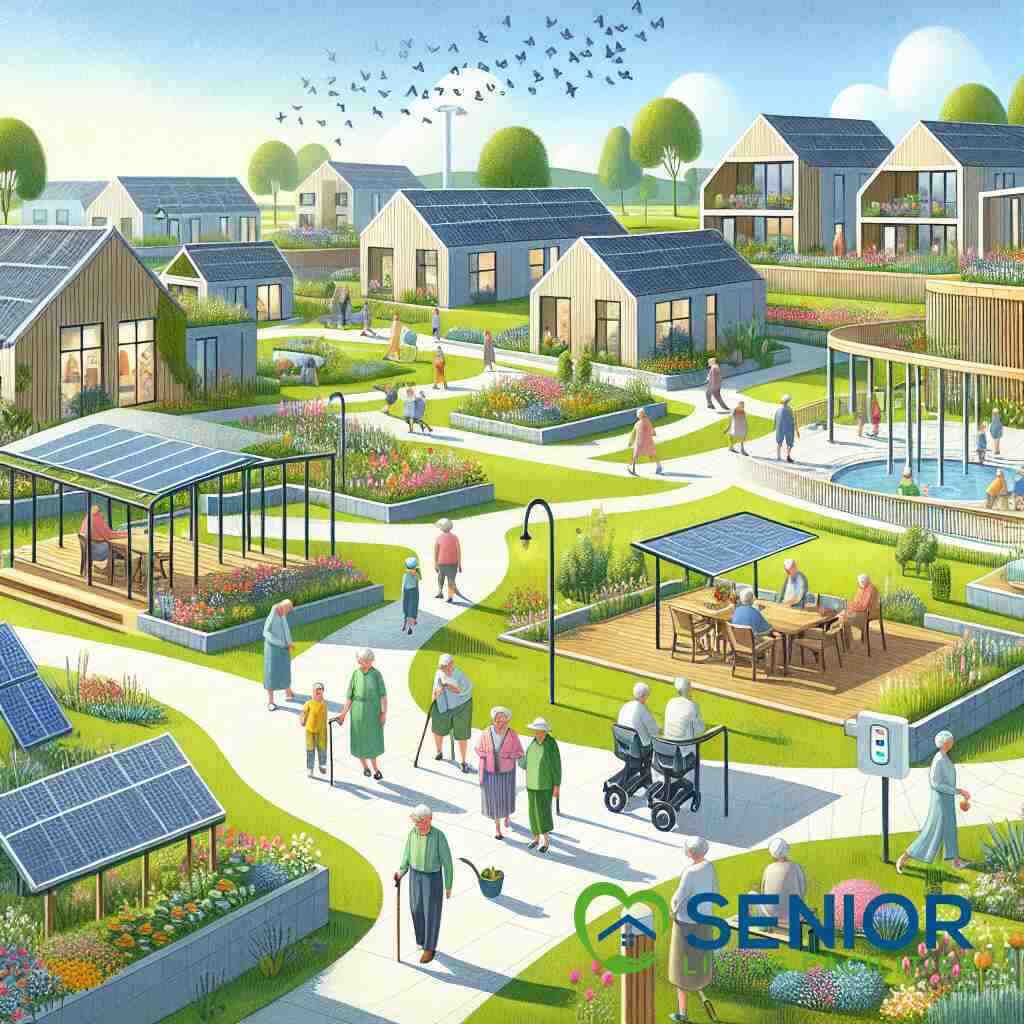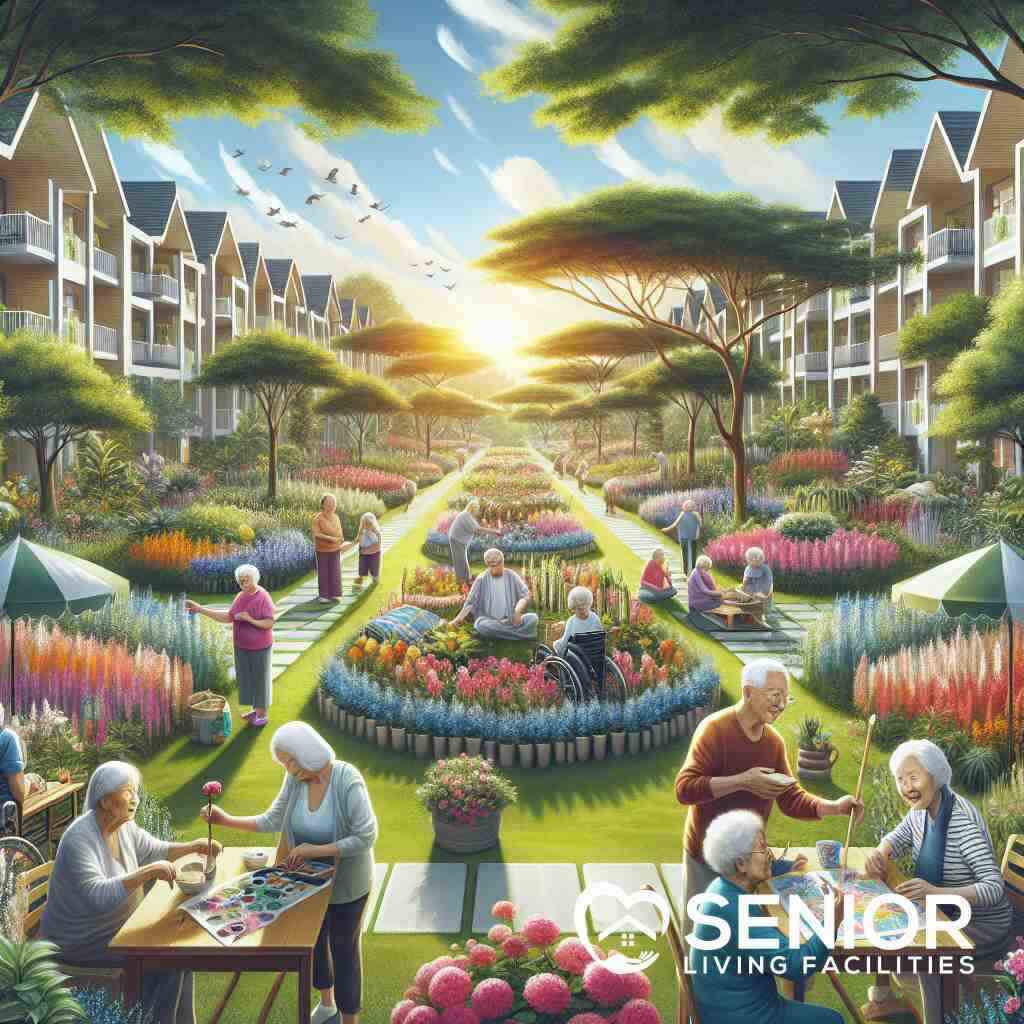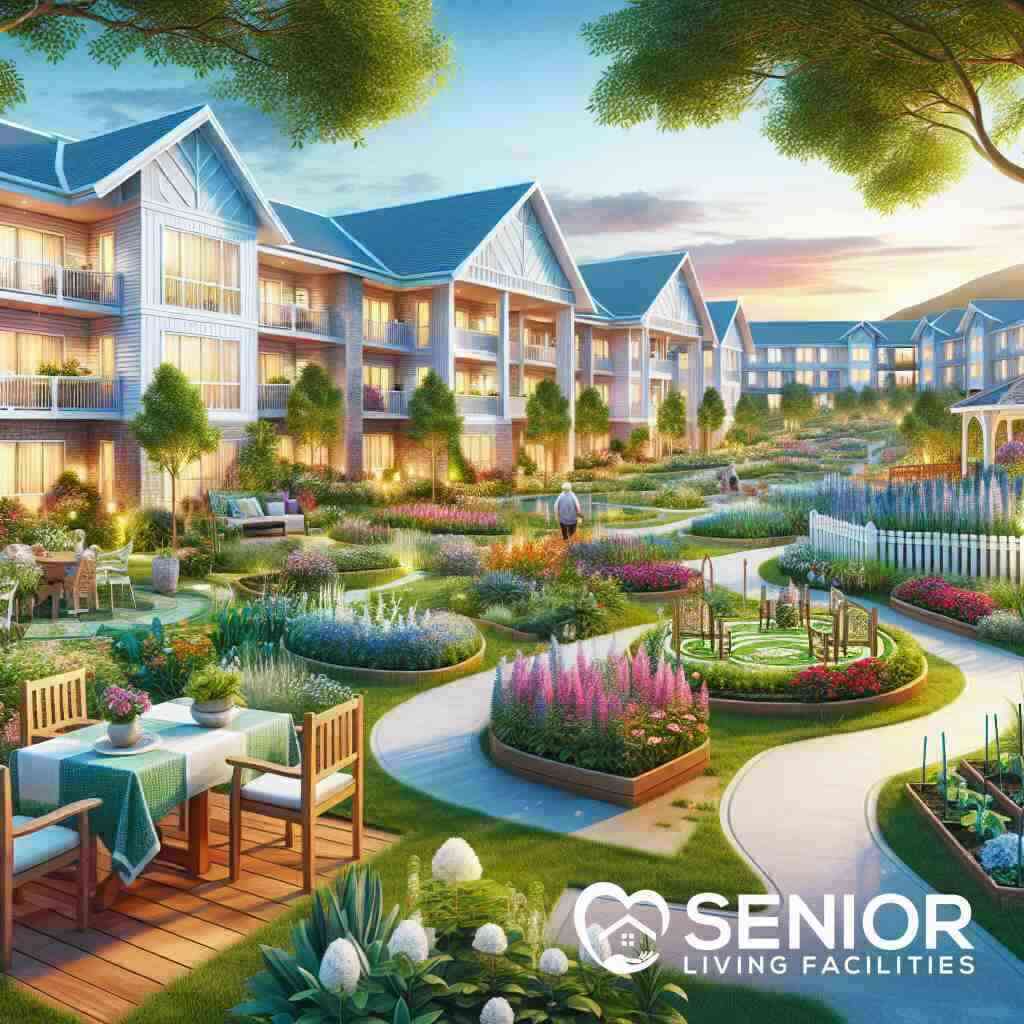
How to Compare Senior Living Facilities for a Better Choice?
November 8, 2024
Paving the Way: Understanding Senior Living Dynamics
Unveiling the Spectrum of Senior Living Options
Exploring senior living facilities is akin to navigating a multifaceted journey, with myriad choices available for potential residents. The spectrum includes independent living communities, ideal for those who cherish autonomy, and assisted living options that cater to seniors requiring additional support. Additionally, there are more structured environments, such as nursing homes, which provide extensive medical care. With senior living facilities explained, it’s crucial to understand the distinctions between these options. Equipped with this knowledge, families can make informed decisions that align with the specific preferences and needs of their loved ones.
Finding suitable housing options for seniors isn’t solely about meeting immediate needs but also about anticipating future changes and preferences. Understanding the nuances between these options can empower seniors and their families to make decisions that enhance long-term well-being and satisfaction. In such dynamic environments, seeking the best senior living choices becomes paramount as it ensures a seamless transition into a community ideally suited to a senior’s evolving lifestyle.
Decoding the Essentials of Senior Care Evaluation
Evaluating senior care involves a keen understanding of diverse factors that contribute to a facility’s quality of service. From comprehending the infrastructure that supports residents’ needs to the staff’s interpersonal skills, each element plays a significant role in residents’ daily lives. Through insightful observation and direct inquiries, families can undertake a comprehensive senior care evaluation. This process aids in discerning the services that align with individual care expectations and ensures that loved ones receive the necessary support.
Critical assessment of quality indicators such as accreditation status, staff qualifications, and health service options is vital in this evaluation phase. Moreover, gathering feedback from current residents and staff members adds depth to this understanding and often provides an unfiltered view of daily operations. Unraveling these insights is crucial, as it ensures that seniors enjoy vibrant living conditions supported by top-notch care standards that are not just promised but delivered consistently.
Navigating the Complexities of Senior Housing Pros and Cons
Choosing between diverse senior housing solutions involves an intricate analysis of the benefits and potential drawbacks associated with each type. Prospective residents and their families ought to weigh the social and emotional impact of relocating to a new environment against the practical benefits of increased safety, medical support, and community engagement. As these communities range from luxurious villas to specialized care units, the decision hinges on striking the right balance for long-term satisfaction.
Understanding the strengths and limitations of each senior living option assists families in making decisions that adequately accommodate a senior’s health and lifestyle needs. Whether opting for independent or assisted living options, it is essential to consider facility offerings, location convenience, and financial considerations. Thorough comparison and analysis enable families to make informed choices that enhance seniors’ quality of life while securing their future well-being in robust, enriching environments.
Senior Living Decoded: Identifying Key Decision Factors
Assessing Facility Quality and Standards of Care
Evaluating the quality and standards of senior living facilities is a critical factor when choosing the ideal environment for elderly loved ones. Key decision-makers should focus on assessing senior home quality, closely examining factors such as cleanliness, safety protocols, and the availability of essential services. Understanding these elements ensures that seniors enjoy a nurturing and supportive environment that prioritizes their well-being. Families should conduct thorough walkthroughs of potential facilities, interacting with staff and current residents to gain deeper insights into daily living conditions. Notably, facilities with high-quality ratings and positive feedback from residents typically offer superior environments conducive to healthy and fulfilling lifestyles for seniors.
Additionally, external accreditation and compliance with industry standards should be considered as part of the evaluation process. These benchmarks provide an objective measure of a facility’s commitment to maintaining excellence in care and operations. By prioritizing these factors in their decision-making process, families can confidently choose a senior living community that meets or surpasses their loved one’s expectations for safe, compassionate, and quality care.
Comparing Independent vs Assisted Living Solutions
Choosing between independent and assisted living solutions requires a detailed understanding of both options’ advantages and limitations. Independent living typically appeals to seniors who can manage daily activities with minimal support, offering a lifestyle rich in social activities and freedom. In contrast, assisted living provides additional care for those needing help with daily tasks, offering personalized senior care that ensures safety and improved quality of life.
Families often face the challenge of balancing autonomy with the need for increased care. Evaluating a senior’s specific needs is crucial in this process, considering factors like mobility, health status, and personal preferences. It’s essential to tour facilities, examine the available amenities, and understand the level of care delivered by staff members. The choice between these options often hinges on striking the right balance between independence and necessary assistance, ensuring a thriving and engaged lifestyle for seniors.
Further, when deciding, consider future needs. Some communities offer transition options between independent and assisted living, facilitating a seamless shift as care needs evolve. This adaptability can enhance long-term satisfaction and security, offering peace of mind to both residents and their families.
Evaluating Community Engagement and Resident Satisfaction
Resident satisfaction in senior communities is a vital indicator of a facility’s success in providing a supportive and enriching environment. Assessing community engagement opportunities, such as social events, educational programs, and recreational activities, is crucial when evaluating a potential living situation. Active and engaged communities often reflect high levels of resident satisfaction, as these elements contribute significantly to improved quality of life and emotional well-being.
Surveys, testimonials from current community members, and firsthand observations can provide invaluable insights into a facility’s day-to-day experiences. Potential residents and their families should inquire about the frequency and variety of offered activities and the ease with which residents can suggest or initiate new engagements.
Moreover, the presence of dedicated staff who encourage involvement and foster a sense of belonging can significantly enhance the overall community atmosphere. Effective staff-resident interactions and supportive peer relationships within the community can make a substantial positive impact, ensuring that seniors experience not just care but a vibrant, connected living environment.
Cost vs Care: A Delicate Balancing Act
Conducting a Comprehensive Senior Living Cost Comparison
When choosing a senior living facility, understanding the intricate relationship between cost and care is essential. A broad overview of pricing structures is fundamental to determining the affordability of potential living arrangements. Factors influencing costs often include location, type of living arrangement, and additional services offered. A detailed senior lifestyle cost comparison helps families and seniors alike evaluate the financial implications of various options. It’s wise to compare the total expense against the level of care provided to ensure optimal financial planning. Engaging with facilities to inquire about fee breakdowns, such as base rent, services charged, and potential hidden costs, ensures transparency. Such comprehensive comparison protects families from unforeseen expenditures, enhancing confidence in their chosen community.
Affordability doesn’t solely rest on monthly fees but also includes the value derived from quality care and amenities. Reviewing detailed cost comparisons encourages informed decision-making, prompting families and seniors to contemplate not just the immediate expenditures but also future financial viability. By evaluating diverse living options with clarity, they can align their budget constraints with the desirable quality of life for their loved ones.
Interpreting Senior Care Quality Indicators
Understanding key quality indicators in senior care is paramount when evaluating potential living facilities. These indicators serve as benchmarks that measure care quality and operational excellence. Families must discern these elements, ensuring facilities meet or exceed industry standards. Assessing senior home quality aids in identifying environments where seniors can thrive, benefiting from top-tier service and support. Comprehensive indicators often encompass facility accreditation, staff qualifications, and resident satisfaction levels.
Quality is often mirrored in staff professionalism and the resident-staff ratio, ensuring personalized attention. Consistent staff training and adherence to best practices reflect commitment toward exceptional senior care. Additionally, implementing a keen eye on health and safety protocols can safeguard seniors and foster trust in the chosen facility. By scrutinizing these quality elements, families make well-informed decisions grounded in evidence-based performance metrics.
Exploring Affordability and Financial Planning
crafting a seamless financial plan resonates with the nuances of affording senior care. Strategic financial planning for senior living involves anticipating future financial needs against current capabilities and forming a solid foundation for decision-making. Start by evaluating personal and family resources, potential benefits from insurance or government programs, and any assistance options available through facilities. An effective plan provides a roadmap, addressing unexpected expenses without compromising quality of life.
Families should also explore flexible payment options and understand each facility’s policy on price adjustments upon increased care needs. Financial experts can assist in maximizing savings without sacrificing essential services. Proactive planning not only aligns with immediate needs but also anticipates shifts in care requirements, securing a stable environment for senior residents. By embracing a detailed, proactive financial approach, families ensure a sustained, high-quality living experience for their loved ones.
Envision the Future: Exploring Senior Lifestyle Options
Assessing Community Activities and Amenities
Evaluating the range of community activities and amenities available in senior living facilities provides essential insights into the quality of life a resident might enjoy. Engaging programs and luxurious amenities often enhance residents’ daily experiences, promoting overall well-being and satisfaction. When assessing senior amenities, consider the variety of recreational and educational activities offered. Facilities that prioritize physical, mental, and social engagement frequently reflect high resident happiness and vitality levels. Furthermore, amenities such as fitness centers, libraries, and communal spaces can significantly contribute to an enriching living environment, fostering a strong sense of community among residents. Assessing senior amenities against expected lifestyle preferences allows families and seniors to select communities that align with their interests and well-being goals.
Beyond standard amenities, innovative options such as art studios, cooking classes, and wellness workshops are becoming integral components of senior living. These initiatives promote creativity and continual learning, essential elements in sustaining an active mind and body. When visiting potential communities, take note of the schedule and diversity of activities to ensure varied opportunities for enhanced living experiences. Ultimately, fostering a lively and engaging atmosphere through well-structured activities and amenities elevates residents’ satisfaction and their overall quality of life.
Personalized Care Selection for Unique Needs
Tailoring care to each senior’s unique needs is critical in selecting the ideal living environment. Personalized senior care considers individual health conditions, lifestyle preferences, and anticipated future needs, ensuring comprehensive and compassionate service. Facilities offering customizable care plans stand out, as they provide the flexibility to adapt to changing conditions. This personalized approach enables residents to experience independence while receiving necessary support, maximizing their quality of life.
Factors to consider when exploring personalized care include staff training, resident-to-caregiver ratios, and on-site medical services. Additionally, inquire about facilities’ experience in handling specific health conditions, ensuring they accommodate unique needs effectively. Choosing a community with skilled professionals dedicated to offering individualized attention cultivates a nurturing and safe environment. Explore personalized senior care options as these significantly influence residents’ comfort and well-being, providing peace of mind to both residents and their families.
The incorporation of advanced technologies in care delivery also plays a crucial role in enhancing personalized experiences. Implementing wearable health monitors, digital communication tools, and adaptable living spaces exemplifies an innovative approach to senior care. Emphasizing innovative, personalized care solutions positions facilities at the forefront, ensuring they effectively meet residents’ evolving needs.
Measure Long-term Care Expectations
Anticipating future care requirements is indispensable in securing an appropriate senior living solution. Long-term planning involves understanding potential shifts in health and lifestyle and and preparing residents for possible increased care needs. Evaluating long-term senior care expectations requires analyzing transition options within communities, such as moving from independent to assisted living, which facilitates adaptive living situations.
Research communities offer a continuum of care to ensure they can accommodate evolving needs without requiring disruptive relocations. Long-term senior care expectations focus on stability and continuity in satisfying changing requirements, bolstered by a facility’s capacity to deliver seamless care adaptations. These expectations are vital to ensuring residents are supported throughout their care journey.
Moreover, financial arrangements and future service cost predictions should be considered to secure affordability over time. Consulting with facility administrators about projected fee adjustments and long-term financial strategies contributes to informed decision-making. The balance of quality care, adaptability, and financial sustainability is crucial in realizing peace of mind for seniors and their families, ensuring a secure and fulfilling life regardless of how health needs may evolve.
Conclusion: Crafting Your Path to a Fulfilling Senior Living Experience

Summarizing the Journey of Engaged Living
Navigating the journey of selecting the right senior living facility requires a comprehensive grasp of various aspects, from community engagement for seniors to meticulously comparing cost and care. By understanding the rich spectrum of senior living options, families and individuals can make informed choices that align with personal needs and expectations. This exploration extends beyond surface-level evaluation, demanding a closer look at the quality indicators and the intricate balance between independence and necessary support. With the right approach, the decision-making process transforms into an enriching journey that enhances seniors’ life quality while ensuring peace of mind.
Embracing the Right Choice for Future Well-Being
Embracing the ideal living environment for the future encompasses more than just current preferences; it includes foresight into evolving needs and aspirations. Understanding the distinctions between aging in place vs senior community options helps families select settings that offer continuity and adaptability as needs change. The crucial final step is securing a community that not only addresses immediate needs but is also equipped to handle anticipated shifts in lifestyle and care. By considering all these elements, families position themselves and their loved ones on a path to sustained well-being and satisfaction. This comprehensive and strategic approach ensures that seniors experience a fulfilling, secure, and memorable life journey within their chosen community.
Frequently Asked Questions
Question: How does Senior Living Facilities assist in comparing senior living options for families?
Answer: Senior Living Facilities offer an intuitive platform designed to make the process of comparing senior living options seamless and informative. What is the Future of Senior Living in 2024? Our extensive database allows you to search and compare various senior living facilities across all 50 US states, focusing on elements like care levels, community engagement, and amenities. By providing a detailed senior living cost comparison and facility quality assessment, we help families make informed decisions tailored to their loved ones’ unique needs. Navigating Senior Living Options Near Me for 2024 With our guidance, choosing a senior living community becomes a well-rounded decision grounded in reliability and trust.
Question: What factors should I consider when evaluating senior care services and facilities through Senior Living Facilities?
Answer: When using Senior Living Facilities to evaluate senior care services, key factors include facility accreditation, staff qualifications, and resident satisfaction. It’s essential to look into the comparison of senior living amenities and assess community activities that foster community engagement for seniors. Our platform highlights these factors to ensure families understand the quality of care provided. By focusing on personalized senior care selection and assessing elder care living standards, our service ensures that seniors can enjoy a supportive and enriching living environment.
Question: How does the blog How to Compare Senior Living Facilities for a Better Choice guide families in exploring senior care choices? How to Find Affordable Senior Living Near You?
Answer: Our blog, How to Compare Senior Living Facilities for a Better Choice, provides a comprehensive overview of factors critical in exploring senior care choices. Comparing Urban vs. Rural Senior Living Facilities, It delves into the differences between independent and assisted living, evaluates long-term care options, and highlights essential aspects of senior housing comparison. By using our platform, families can understand these factors in-depth, ensuring they select the best senior living options that align with personal needs and future well-being. This level of detail builds trust and confidence in choosing the right community for their loved ones.
Question: What role does affordability play in choosing a senior living facility, and how do Senior Living Facilities help in this process?
Answer: Affordability is a significant consideration when choosing a senior living facility, impacting both immediate and long-term satisfaction. Senior Living Facilities offers a detailed senior living cost comparison, helping families evaluate affordability alongside care quality. We provide insights into various pricing structures, ensuring transparency in financial planning for senior living. What is the Cheapest Senior Living Option in 2024? Our platform encourages users to explore flexible payment options and consider future costs, allowing families to select a community that offers the desired quality of life without exceeding their budget constraints.
Question: Can senior living facilities help families understand the pros and cons of different senior housing options?
Answer: Yes, Senior Living Facilities provides an extensive evaluation of the pros and cons associated with different senior housing options. By comparing independent vs assisted living choices and understanding their implications on lifestyle and care, families can weigh the benefits and drawbacks effectively. Our platform facilitates senior housing comparison by offering insights into the strengths and limitations of each option, ensuring families make well-informed decisions rooted in both present needs and future expectations. This comprehensive approach enhances trust in our services and supports families in their journey to finding the perfect living arrangement for their senior loved ones.



